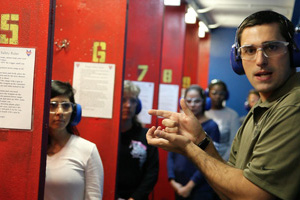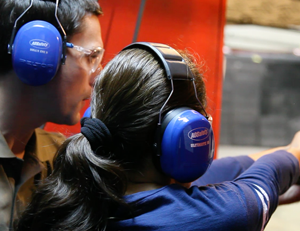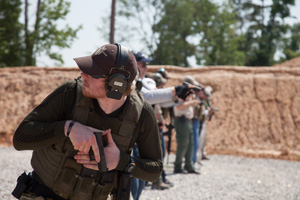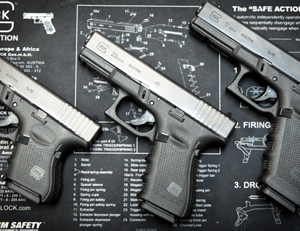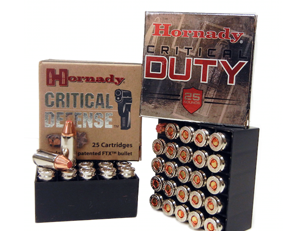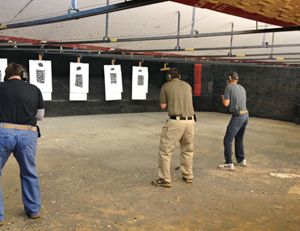
18
FIREARM SAFETY AT HOME
It’s important that children become familiar with the rules of firearm safety. NSSF’s video with shooting champion Julie Golob talks about how to have this important conversation. NSSF and Project ChildSafe have also put together many other resources to promote firearm safety and responsibility, below is a list they have provided for Firearm Safety at Home.
- Always keep the firearm’s muzzle pointed in a safe direction. A “safe direction” means that the gun is pointed so that even if an accidental discharge occurred, it would not result in injury.
- Always keep your finger off the trigger until you actually intend to shoot. When handling a gun, rest your finger outside the trigger guard or along the side of the gun. Don’t touch the trigger until you are actually ready to fire.
- Firearms should be unloaded when not actually in use. Whenever you pick up a gun, such as when removing it from or returning it to storage, remember to point it in a safe direction and make sure it is unloaded.
- Be sure you know how your firearm operates: read the manual on your firearm, know how to safely open and close the action of the firearm and know how to safely remove any ammunition from the firearm and its magazine.
- Store your firearms in a locked cabinet, safe, gun vault or storage case when not in use, ensuring they are in a location inaccessible to children and cannot be handled by anyone without your permission.
- Store your ammunition in a locked location separate from firearms.
- Use a gun locking device that renders the firearm inoperable when not in use. A gun lock should be used as an additional safety precaution and not as a substitute for secure storage.
- Make sure young people in your home are aware of and understand the safety guidelines concerning firearms. Have them sign the Project ChildSafe Pledge for young people—a reminder that if they find an unattended firearm in their home or a neighbor’s to not touch it, and tell an adult.
- Always unload, clean and place your firearms in their secure storage location immediately after returning from a hunting trip or a day at the range.
- Educate everyone in your family about firearms safety. Visit the Project ChildSafe website for safety information and to find out where to get a free firearm safety kit in your area.
Project ChildSafe is the largest, most comprehensive firearm safety education program in the U.S. It was developed by the National Shooting Sports Foundation, the trade association for the firearms industry, and is committed to promoting genuine firearm safety through the distribution of safety education messages and free firearm Safety Kits. The kits include a cable-style gun-locking device and a brochure (also available in Spanish) that discusses safe handling and secure storage guidelines to help deter access by unauthorized individuals.
Project ChildSafe is a real firearm safety solution that helps make communities safer. Since 1999, more than 15,000 law enforcement agencies have partnered with the program to distribute more than 37 million firearm safety kits to gun owners in all 50 states and five U.S. territories. Through vital partnerships with elected officials, community leaders, state agencies, businesses, the firearms industry and other stakeholders, Project ChildSafe has helped raise awareness about the safe and responsible ownership of firearms and the importance of storing firearms securely when not in use to help prevent accidents, theft, and misuse.
Among Project ChildSafe’s many firearm safety resources are an infographic and fact sheet. These tips and many other resources are available on their Safety Resources Page.

18
FIREARM SAFETY AT HOME
It’s important that children become familiar with the rules of firearm safety. NSSF’s video with shooting champion Julie Golob talks about how to have this important conversation. NSSF and Project ChildSafe have also put together many other resources to promote firearm safety and responsibility, below is a list they have provided for Firearm Safety at Home.
- Always keep the firearm’s muzzle pointed in a safe direction. A “safe direction” means that the gun is pointed so that even if an accidental discharge occurred, it would not result in injury.
- Always keep your finger off the trigger until you actually intend to shoot. When handling a gun, rest your finger outside the trigger guard or along the side of the gun. Don’t touch the trigger until you are actually ready to fire.
- Firearms should be unloaded when not actually in use. Whenever you pick up a gun, such as when removing it from or returning it to storage, remember to point it in a safe direction and make sure it is unloaded.
- Be sure you know how your firearm operates: read the manual on your firearm, know how to safely open and close the action of the firearm and know how to safely remove any ammunition from the firearm and its magazine.
- Store your firearms in a locked cabinet, safe, gun vault or storage case when not in use, ensuring they are in a location inaccessible to children and cannot be handled by anyone without your permission.
- Store your ammunition in a locked location separate from firearms.
- Use a gun locking device that renders the firearm inoperable when not in use. A gun lock should be used as an additional safety precaution and not as a substitute for secure storage.
- Make sure young people in your home are aware of and understand the safety guidelines concerning firearms. Have them sign the Project ChildSafe Pledge for young people—a reminder that if they find an unattended firearm in their home or a neighbor’s to not touch it, and tell an adult.
- Always unload, clean and place your firearms in their secure storage location immediately after returning from a hunting trip or a day at the range.
- Educate everyone in your family about firearms safety. Visit the Project ChildSafe website for safety information and to find out where to get a free firearm safety kit in your area.
Project ChildSafe is the largest, most comprehensive firearm safety education program in the U.S. It was developed by the National Shooting Sports Foundation, the trade association for the firearms industry, and is committed to promoting genuine firearm safety through the distribution of safety education messages and free firearm Safety Kits. The kits include a cable-style gun-locking device and a brochure (also available in Spanish) that discusses safe handling and secure storage guidelines to help deter access by unauthorized individuals.
Project ChildSafe is a real firearm safety solution that helps make communities safer. Since 1999, more than 15,000 law enforcement agencies have partnered with the program to distribute more than 37 million firearm safety kits to gun owners in all 50 states and five U.S. territories. Through vital partnerships with elected officials, community leaders, state agencies, businesses, the firearms industry and other stakeholders, Project ChildSafe has helped raise awareness about the safe and responsible ownership of firearms and the importance of storing firearms securely when not in use to help prevent accidents, theft, and misuse.
Among Project ChildSafe’s many firearm safety resources are an infographic and fact sheet. These tips and many other resources are available on their Safety Resources Page.

